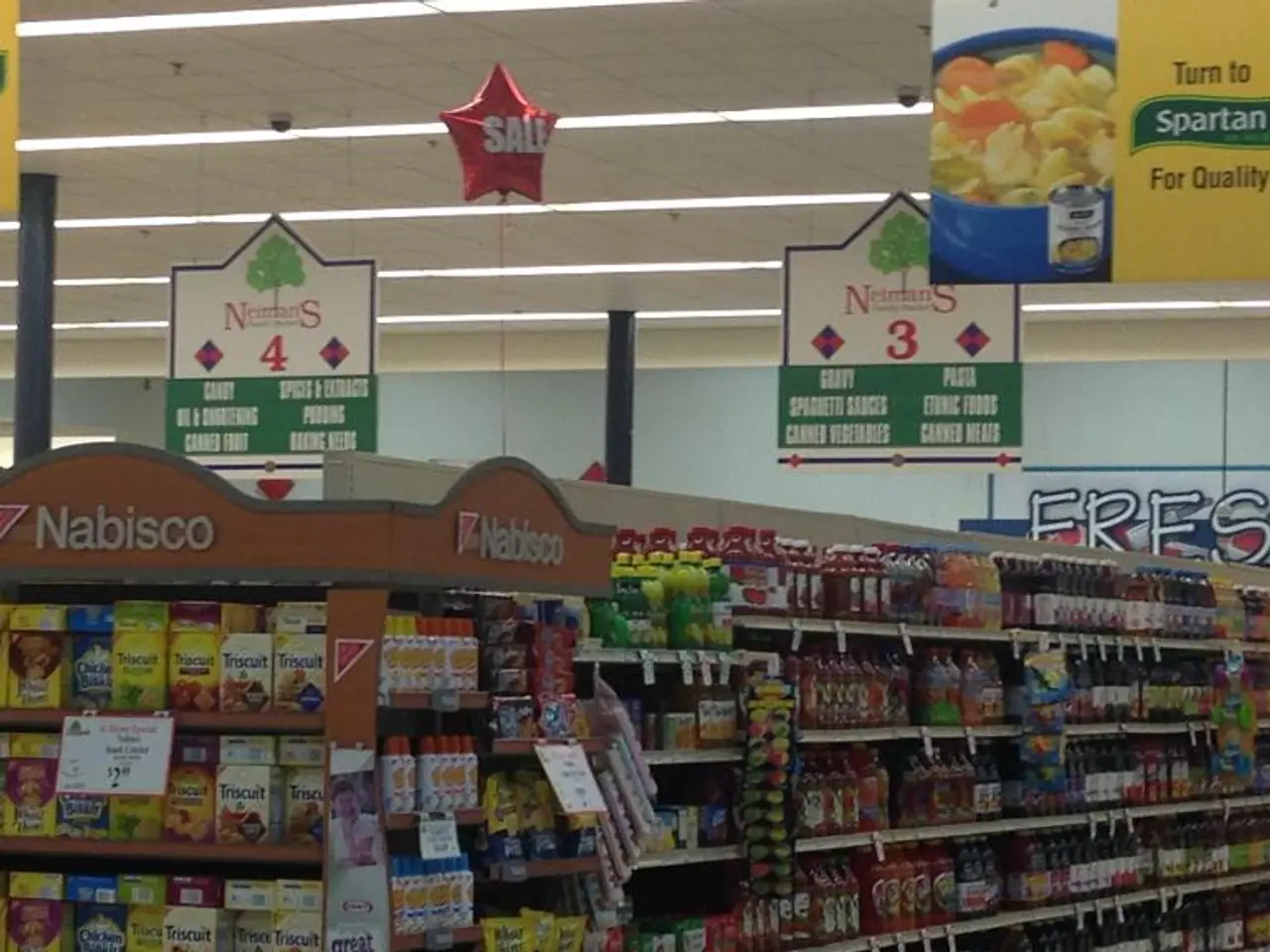Rapid Growth in E-commerce for the Lighting Industry Projected at 6.1%
In the ever-evolving world of technology, the lighting industry is witnessing a significant shift towards e-commerce, propelling the market forward at an unprecedented pace.
In January 2024, a leading lighting brand launched an AI-driven smart lighting system for residential use, boasting a 30% improvement in energy efficiency. This marked the beginning of a new era for the industry. Fast forward to May, and a major lighting retailer unveiled a new product line of energy-efficient LED lighting designed for commercial use.
The e-commerce market for the lighting industry is experiencing a surge, driven largely by the rise of smart lighting products sold online and expanding digital retail channels. This trend is not confined to a few players; key players in the market include Savant Systems Inc., Osram Licht AG (AMS OSRAM AG), Signify NV, Amazon Basics, Wayfair, Walmart, Inc., BulbAmerica, Alibaba.com, Zumtobel Group AG, Panasonic Corporation, Acuity Brands Inc., Hubbell Incorporated, BestBuy, IKEA, Bajaj Electricals, Dialight PLC, and Nichia Corporation.
The overall lamps and lighting market is projected to grow from USD 134.14 billion in 2025 to USD 165.73 billion by 2030, at a CAGR of 4.32%. Within this, LEDs dominate with 64% of the market revenue in 2025, and smart lighting products, often sold via e-commerce, are a major growth segment.
The smart lighting market, a key subsection for e-commerce growth, is expected to increase from USD 18.09 billion in 2024 to USD 21.23 billion in 2025 (CAGR of 17.4%). This rapid growth is supported by government initiatives, IoT adoption, and rising consumer interest in energy-efficient, connected lighting solutions. By 2029, the smart lighting market is estimated to reach USD 45.9 billion, growing at an estimated CAGR of 21.3%.
The global e-commerce market itself is projected to expand tremendously, growing from USD 31.78 trillion in 2024 to USD 216.36 trillion by 2035 at a CAGR of 19.05%. This growth fuels increased online sales channels across all sectors, including lighting. The e-commerce platform market that supports these sales is forecasted to grow from USD 9.1 billion in 2025 to USD 16.5 billion by 2030 at a CAGR of 12.7%. Advanced technologies like AI-driven personalization, cloud hosting, and secure payments enable seamless digital retail operations for lighting companies.
This e-commerce-driven growth in the lighting industry accelerates market reach and consumer engagement globally, allowing lighting manufacturers and retailers to rapidly launch and scale smart lighting products. This is fostering digital transformation across the lighting supply chain. Online channels reduce traditional retail overheads and open new markets, particularly in emerging economies benefiting from rising internet penetration and smartphone use.
The lighting industry's shift to e-commerce contributes to energy efficiency goals and smart city initiatives by making advanced lighting more accessible. Economically, this marketplace expansion supports job creation in technology, logistics, and digital marketing, while enhancing competition and innovation.
In summary, the lighting industry's e-commerce market is growing at a robust pace, outstripping the traditional lighting sector due to smart lighting demand and digital commerce adoption. This trend positively impacts global economic activity, business models, and technological innovation within the lighting sector and beyond. With the growing trend toward online shopping, businesses have numerous opportunities to expand their reach and optimize their operations in the lighting industry.
In March 2024, an e-commerce platform for lighting solutions expanded its reach by partnering with global logistics companies to streamline delivery processes. In June 2024, an online marketplace for smart home products introduced augmented reality tools for customers to visualize lighting in their homes before purchase. In August 2024, a well-known lighting brand introduced a subscription model for its smart lighting solutions, enhancing consumer convenience. Companies like Walmart, Inc. and Panasonic Corporation are already capitalizing on this trend, further solidifying the e-commerce market's dominance in the lighting industry.
Despite the ever-evolving world of technology primarily focusing on the lighting industry's shift towards e-commerce, sports enthusiasts may be surprised to learn that this trend isn't exclusive to the industry. In fact, smart lighting products, which dominate a significant portion of the e-commerce market, are also finding their way into sports arenas and stadiums. The growing popularity of LED lighting for sports applications offers energy-efficient, customizable, and spectator-friendly lighting options, fostering a new era in sports event production.







